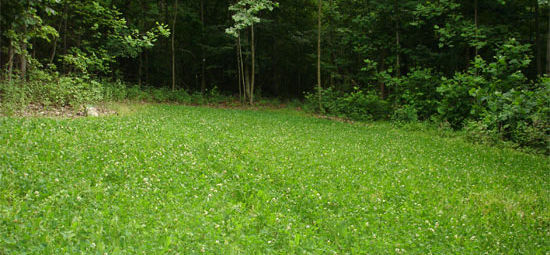Hunters know that food plots are great for attracting white-tailed deer during the hunting season, but what about plots planting during the spring? Warm season food plots have a different focus that is not harvest-related, but rather strictly for providing supplemental nutrition. These types of plots can perform well during the spring and summer but they must be approached much differently than cool season food plots planted during the fall and winter. Doing a little legwork before jumping off into a project can prevent lost time and costly mistakes.
There are several factors which landowners and hunters must consider prior to planting warm season plots in Texas. First, it is critical that these types of plots be planted on soils that hold moisture. We can get away with seeding plots just about anywhere during the fall because moisture is quite reliable at that time of year. This is not so much the case on the back-half of spring and going into the summer. Although sandy soils work fairly well when it’s cool, avoid these soils when seeding deer food plots intended for warmer weather.

Another good rule of thumb for warm season food plots in Texas is to go big! Bigger is almost always better and this definitely holds true for spring food plots in Texas. Many of the cool season species planted to fall food plots are grasses, which are well adapted to grazing. Oats and wheat do quite well with moderate to heavy use by whitetail, but many of the species planted for warm weather plots do not hold up on a per area basis. Deer can simply knock them out.
Food plots intended to provide forage through the summer must be larger in size to produce an equivalent amount of forage to fall plots. This is not only because the plants used are different, but also because if planted on the light end of seeding rates then this allows more space, water per growing plant. Rule of thumb: Spring and summer plots should be at least twice the size of fall and winter plots. And do not disk up an existing plot when planting for summer.
It is best to use different locations for cool season and warm season food plots on a property. First, many fall/winter plots will continue to produce usable forage up into summer, before it gets too hot. Why roll it under when it can still provide some benefit to deer? Secondly, this practice can cut down on fertilizer purchases, which would be absolutely necessary in many areas for multiple seasons of plots on specific sites. Different plot sites can also prevent soil erosion by limiting soil disturbance on any one site.
White-tailed deer will readily use warm season plots during the spring and summer, but make sure they are done right or it will end in wasted time and money. Spring and summer food plots are great for providing supplemental foods for bucks during the antler growing season as well as for does during gestation and lactation. These all means healthier deer, more of them and better deer hunting come fall. When establishing warm season plots, plant them on the best soils available, make them at least twice the size of fall and winter plots and use different locations for fall and spring plots.